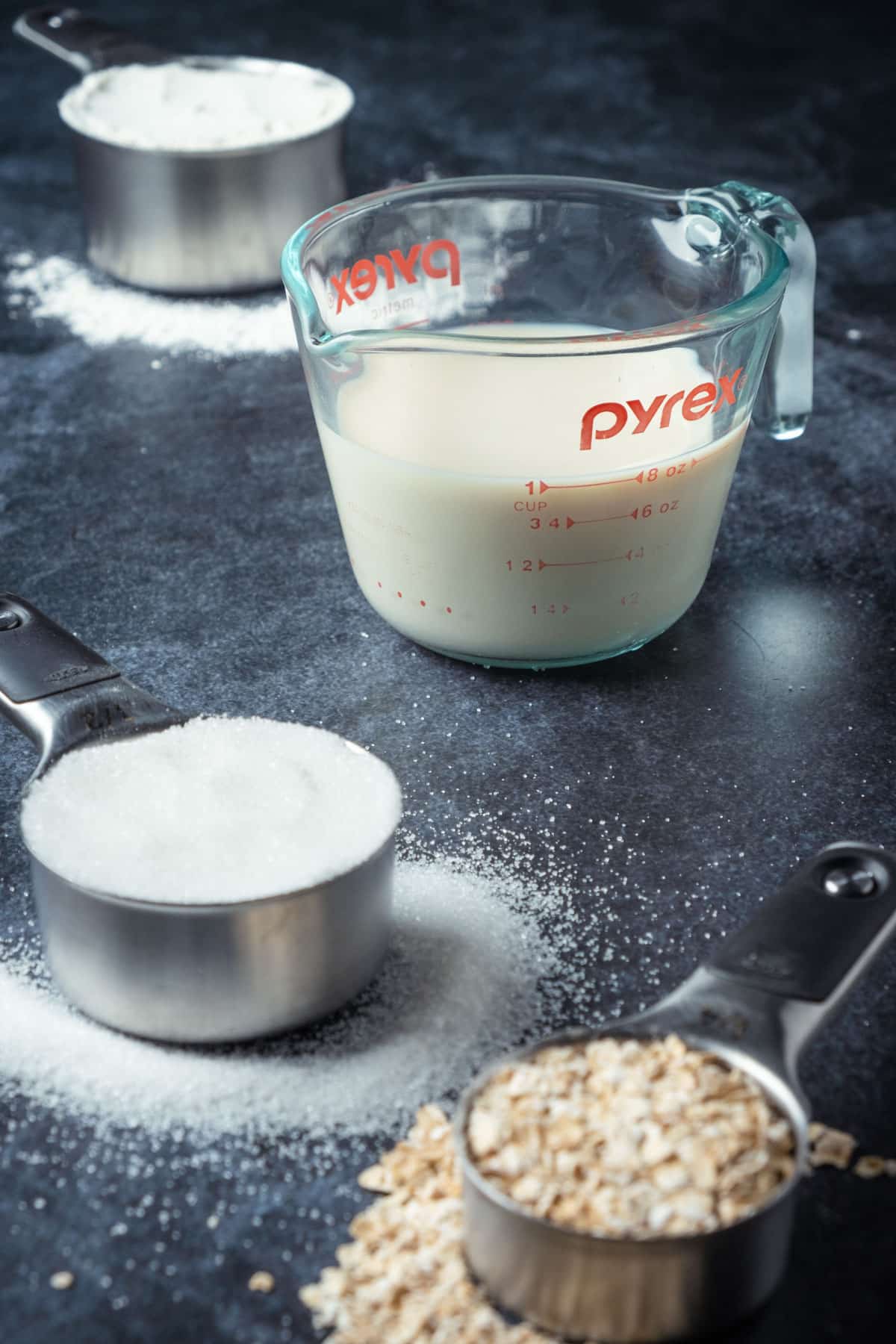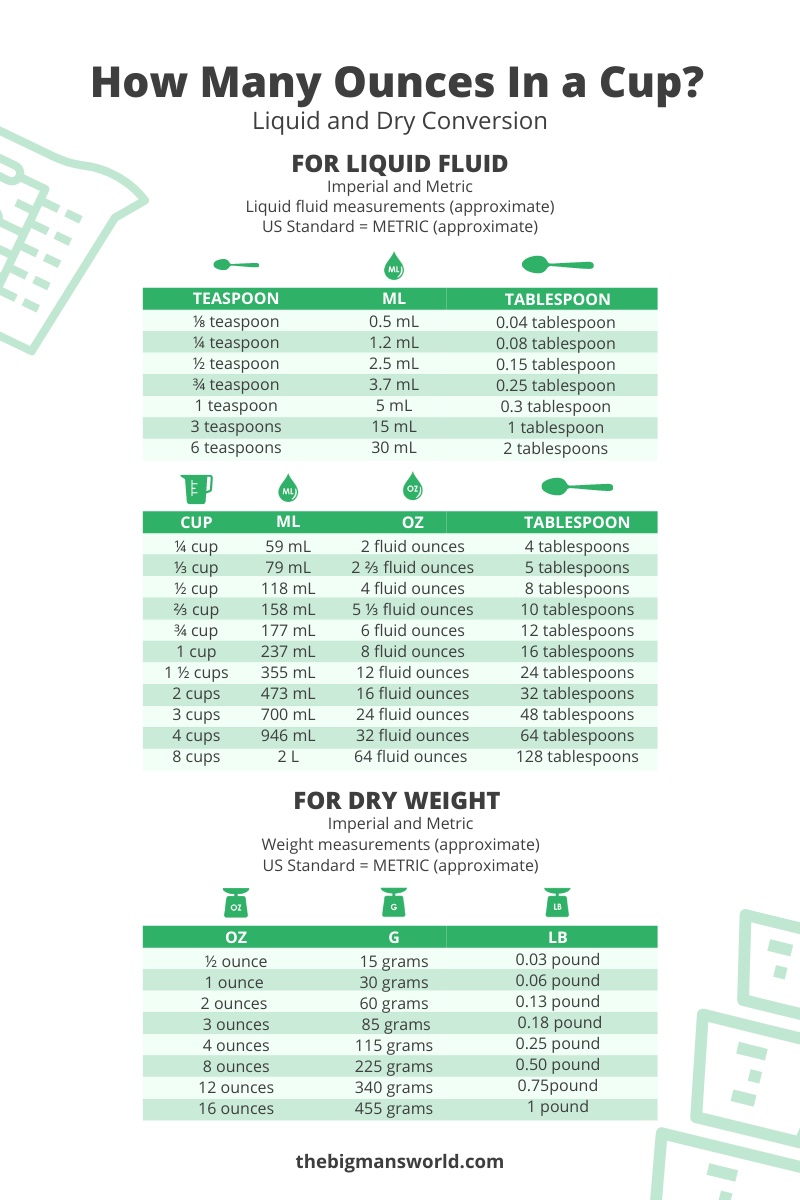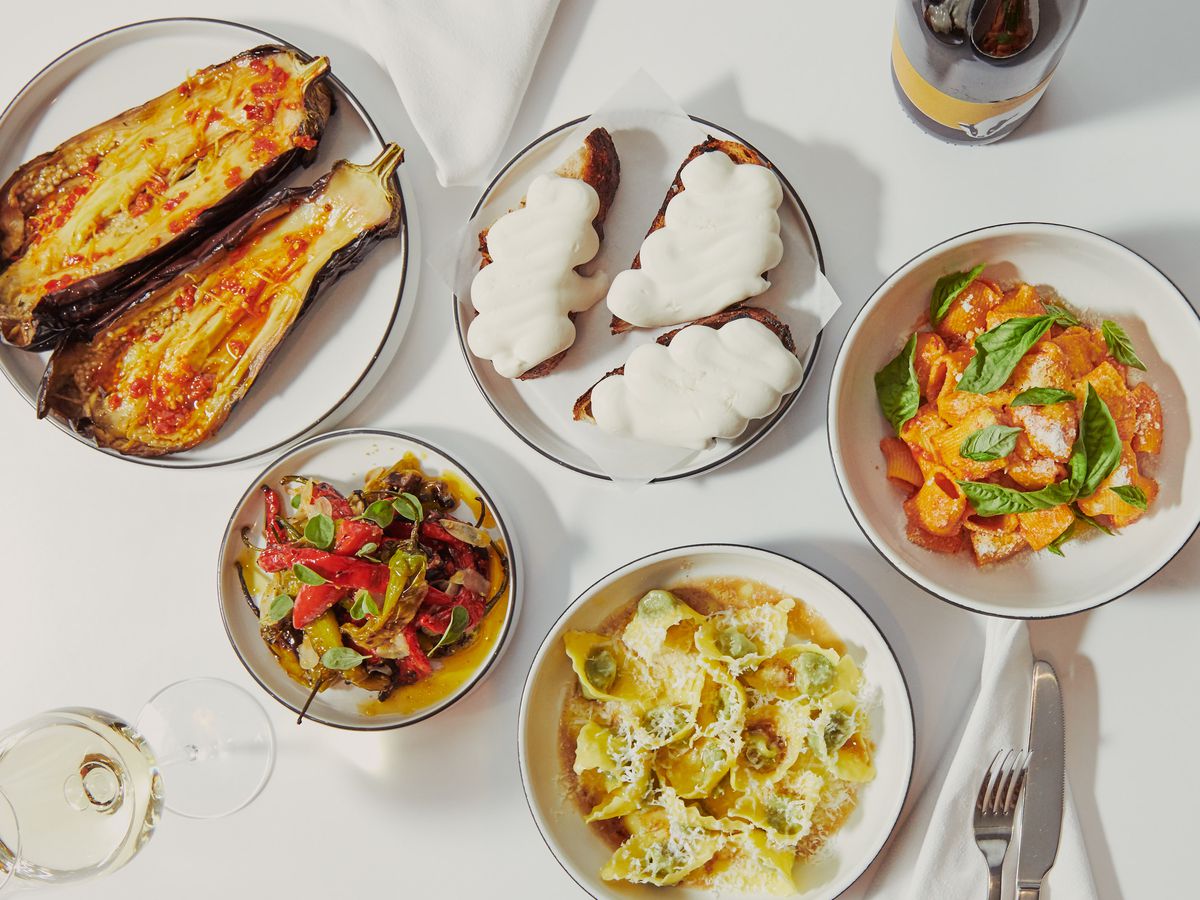Are you often confused about how to measure ingredients accurately in your recipes? If so, don't worry, you're not alone. Understanding the difference between fluid ounces and dry ounces, as well as the measurements for different ingredients, can be challenging. Whether you're baking or cooking, it's crucial to get the measurements right to achieve the desired results. In this article, we'll provide you with helpful tips and a comprehensive guide on how many ounces are in a cup for both liquid and dry ingredients. With this knowledge, you'll be able to confidently measure your ingredients and create delicious dishes every time.
What's the measurement of a cup in fluid ounces?
Next time you're measuring ounces in a cup, keep these measurements in mind:- 1 cup = 8 fluid ounces, 16 tablespoons
- ¾ cup = 6 fluid ounces, 12 tablespoons
- ½ cup = 4 fluid ounces, 8 tablespoons
- ¼ cup = 2 fluid ounces, 4 tablespoons
- 1 cup = 4.5 dry weight ounces (This is for dry ingredients like flour)
Dry and liquid ounces are not the same, so if you're dealing with dry ingredients, you'll measure them by weight. If you're using liquid ingredients, you'll measure them in fluid ounces.
There is a significant difference between fluid and dry ounces, so always check the ingredients and measure accurately before making any recipe.
How many dry ounces are in a cup?
Unlike liquid ingredients, a cup of dry ingredient will have different ounces. The measurement for dry ingredients depends on the type of ingredient. Here are some examples:- 1 cup of fresh parsley = 1 ounce
- 1 cup of flour = 4 ¼ ounces
- Air popped popcorn = 3 ounces
- Chocolate chips = 6 ounces
Liquid fluid or volume (Liquid vs dry measuring cups)
The measurements for liquid fluid and volume are different. Here is a comparison below-
For liquid fluid
US Standard = Metric (approximate)- ⅛ teaspoon = 0.5 mL
- ¼ teaspoon = 1.2 mL
- ½ teaspoon = 2.5 mL
- ¾ teaspoon = 3.7 mL
- 1 teaspoon = ⅓ tablespoon = 5 mL
- 1 tablespoon = ½ fluid ounce = 3 teaspoons = 15 mL, 15 cc
- 2 tablespoons = 1 fluid ounce = ⅛ cup, 6 teaspoons = 30 mL, 30 cc
- ¼ cup = 2 fluid ounces = 4 tablespoons = 59 mL
- ⅓ cup = 2 ⅔ fluid ounces = 5 tablespoons 1 teaspoon = 79 mL
- ½ cup = 4 fluid ounces = 8 tablespoons = 118 mL
- ⅔ cup = 5 ⅓ fluid ounces = 10 tablespoons 2 teaspoons = 158 mL
- ¾ cup = 6 fluid ounces = 12 tablespoons = 177 mL
- 1 cup = 8 fluid ounces = ½ pint = 16 tablespoons = 237 mL
- 1 ½ cups = 12 fluid ounces = 24 tablespoons = 355 mL
- 2 cups = 16 fluid ounces = 1 pint = 32 tablespoons = 473 mL
- 3 cups = 700 mL
- 4 cups = 32 fluid ounces = 1 quart = 946 ml = 1 L
- 8 cups = ½ gallon = 2 L
- 1 gallon = 128 fluid ounces = 8 pints = 4 quarts = 3785 ml = 4 L
For dry weight
US Standard = Metric (approximate)- ½ ounce = 15 grams
- 1 ounce = 30 grams
- 2 ounces = 60 grams
- 3 ounces = 85 grams
- 4 ounces = ¼ pound = 115 grams
- 8 ounces = ½ pound = 225 grams
- 12 ounces = ¾ pound = 340 grams
- 16 ounces = 1 pound = 455 grams
British vs American measuring cups
Cup measurements can also differ depending on what country you live in. British and American cups and ounce measurements also vary because they use different measurement systems. In the United States, they use the imperial system. Whereas, in the United Kingdom, and in many other countries, they use the metric system.1 UK cup (metric system) = 250 ml
1 US cup (imperial system) = 240 ml
For accurate results when following recipes, always check to see which system they are using OR accurately measure using cups and spoons.
How many cups in 8 ounces?
A cup contains 8 fluid ounces.- 1 cup = 8 fluid ounces
- ¾ cup = 6 fluid ounces
- ½ cup = 4 fluid ounces
- ¼ cup = 2 fluid ounces
Does 2 tablespoons equal 1 ounce?
2 tablespoons are equal to one fluid ounce.- 2 tablespoons = 1 fluid ounce = 1/8 cup = 6 teaspoons = 30 mL, 30 cc
More cooking resources
- How many grams in an ounce
An Ounce vs. A cup
An ounce is a unit of measurement for weight, commonly used in the U.S. and United Kingdom. It weighs approximately 28.53 grams and is a small unit of weight. On the other hand, a cup is primarily used to measure volume while cooking.How Many Ounces in a Cup?
The measurement of how many ounces are in a cup can be complicated because not all measurements are the same. The simple answer is that it depends on what you're measuring. In the case of liquid ingredients, the conversion is straightforward, but with dry ingredients, things become a little more complex. The answer to this question also varies depending on the measurement system used in your country and the nature of the ingredients being measured. For example, in the US, 1 cup equals 8 oz, while in the UK, 1 cup equals 10 oz.
Liquid ingredients
When it comes to liquids, the answer is simple and easy to remember. Liquids are measured in fluid ounces, and there are 8 fluid ounces in 1 cup. This is true for all liquids. So;- 1/8 cup = 1 Ounce
- 1/4 cup = 2 Ounces
- 1/3 cup = 2 ½ Ounces
- 1/2 cup = 4 Ounces
- 2/3 cup = 5 Ounces
- 1 cup = 8 Ounces
- 1 ½ cups = 12 Ounces
- 2 Cups = 16 Ounces
- 2 ½ Cups = 20 Ounces
- 3 Cups = 24 Ounces
- 4 Cups = 32 Ounces
Dry ingredients
When it comes to dry ingredients, the conversion is a bit more complicated. When recipe writers measure out dry ingredients in cups, they are referring to volume rather than weight. The actual weight will depend on the density of the ingredient being measured. For example, 1 cup of fresh spinach is equal to approximately 1 ounce in weight. In contrast, a cup of chocolate chips, which are denser, will weigh approximately 6 ounces.
What is the Difference Between Ounces (oz.) and Fluid Ounces (Fl. oz.)?
The difference is simple – ounces measure weight, while fluid ounces measure volume. Ounces are used to measure dry ingredients by weight, while fluid ounces are used to measure liquid ingredients by volume.Different Measurement Systems for a Cup
The measurement system for cups differs depending on the country. In the US, 1 cup is equal to 8 fluid ounces, while in the UK, Australia, and Canada, 1 cup is equal to 10 fluid ounces. The reason for this discrepancy is that the US uses the imperial system, while the UK and other countries use the metric system.1 US cup (imperial system) = 240 ml
1 UK cup (metric system) = 250 ml
To ensure accurate results when following recipes, always check to see which system is being used or use precise measurements with cups and spoons.
Wet vs. Dry Ingredients
When it comes to measuring ounces, many people often get confused between liquids and solids. Ounces are generally divided into two categories: dry ounces and fluid ounces. Dry ounces are used to measure dry ingredients, while fluid ounces are used to measure liquids and other wet ingredients. Examples of dry ingredients include flour, salt, baking soda, cocoa powder, sugar, powdered milk, and so on. Wet ingredients include water, oil, eggs, liquid milk, yogurt, honey, and other liquids. It is crucial to use the correct measuring cup for different types of ingredients and to avoid using a wet measuring cup for dry ingredients, especially when baking.
How to Properly Fill a Dry Measuring Cup
Measuring dry ingredients requires a slightly different technique than measuring liquids. Here's how to do it properly:- Step 1: Place the dry measuring cup in a bowl to catch any overflow.
- Step 2: Gently pour the dry ingredient into the cup, filling it to the top.
- Step 3: Level off the excess by using a straight edge, such as a knife, scraping the excess back into the bowl.
- Step 4: Use the measuring rule on the cup or place it on a scale to determine the weight.
How to Properly Fill a Liquid Measuring Cup
Measuring liquids is relatively easier than measuring dry ingredients. Here's how you can properly fill a liquid measuring cup:- Step 1: Pour the liquid into the measuring cup gently.
- Step 2: Check the measuring line on the side to accurately track the measurement.
- Step 3: If you need to determine the weight, you can use a scale to weigh the liquid.
How many ounces in a cup of water?
- 1/4 cup = 2 oz.
- 1/3 cup = 2 1/2 oz.
- 1/2 cup = 4 oz.
- 1 cup = 8 oz.
How Many Ounces in a Cup of Maple Syrup?
- 1/4 cup = 3 oz.
- 1/3 cup = 4 oz.
- 1/2 cup = 6 oz.
- 1 cup = 12 oz.
How Many Ounces in a Cup of Cocoa Powder?
- 1/4 cup = 0.9 oz.
- 1/3 cup = 1.2 oz.
- 1/2 cup = 1.3 oz.
- 1 cup = 3 1/2 oz.
How Many Ounces in a Cup of Flour?
- 1/4 cup = 1 oz.
- 1/3 cup = 1 1/2 oz.
- 1/2 cup = 2 1/4 oz.
- 1 cup = 4 1/2 oz.
How many ounces in a cup?
There are eight fluid ounces in one cup.How many ounces in a gallon?
There are 128 fluid ounces in a gallon.How many ounces in a pint?
There are 16 fluid ounces in a pint.How many ounces in a quart?
There are 32 fluid ounces in a quart.How many teaspoons in an ounce?
There are 6 teaspoons in one ounce.How many tablespoons in an ounce?
There are 2 tablespoons in one ounce.How many teaspoons in a tablespoon?
There are three teaspoons in one tablespoon.How many tablespoons in a cup?
1/8 cup = 2 tablespoons1/4 cup = 4 tablespoons
1/2 cup = 8 tablespoons
3/4 cup = 12 tablespoons
1 cup = 16 tablespoons
How many cups in a pint?
There are two cups in one pint, or 16 fluid ounces.How many cups in a quart?
There are four cups in one quart, or 32 fluid ounces.How many pints in a quart?
There are two pints in one quart.How many cups in a gallon?
There are 16 cups in one gallon, or 128 fluid ounces.How many quarts in a gallon?
There are four quarts in one gallon.Butter conversions
Two sticks of butter are the equivalent of one cup or eight ounces.How many grams in an ounce?
There are 28 grams in one ounce.How many ounces in a pound?
There are 16 ounces in one pound.How many milliliters in an ounce?
There are 30 milliliters in one fluid ounce.How many milliliters in a cup?
There are 237 milliliters in one cup.How many milliliters in a pint?
There are 473 milliliters in one pint.How many milliliters in a quart?
There is .95 liters in one quart.How many milliliters in a gallon?
There are 3.8 liters in one gallon.Measuring tips
Have the Right Tools
Make sure you have a set of measuring cups for dry ingredients and liquid measuring cups ranging from one cup to four cups in capacity. A food scale is also useful for more precise measurements, especially in baking.
Level Off Dry Ingredients
When measuring dry ingredients, use the "spoon and level" method. Spoon the ingredient into the measuring cup and level off the excess with a straight edge, such as a knife. This ensures an accurate measurement and helps avoid using too much of an ingredient.
Use the Correct Cups
Use the appropriate measuring cups for dry and liquid ingredients. Dry measuring cups allow you to level off ingredients, while liquid measuring cups have a spout and are designed for pouring liquids without spilling.
Understand the Difference Between Ounces and Fluid Ounces
Remember that ounces measure weight, while fluid ounces measure volume. When converting between the two, consider the density of the ingredient being measured.
Follow the Recipe
When following a recipe, always double-check the measurements and adjust if necessary. It's important to be precise, especially in baking, as small variations can affect the outcome of the recipe. 
How Many Ounces In A Cup: Liquid vs Dry
When it comes to measuring ingredients, it's important to understand the difference between measuring liquid ingredients and dry ingredients.A liquid ounce is a unit of measurement for volume, typically used for liquids such as water, milk, or oil. In the United States, one cup is equal to eight fluid ounces. So, if you have one cup of liquid, you have eight fluid ounces.
On the other hand, a dry ounce is a unit of measurement for weight, typically used for dry ingredients such as flour, sugar, or rice. The weight of one cup of a dry ingredient can vary depending on the ingredient itself and how it is packed. For example, one cup of all-purpose flour can weigh around four to five ounces.

So, when you're asking how many ounces are in a cup, it's important to specify whether you're referring to liquid ounces or dry ounces.
Measurement Tips
Here are some tips to keep in mind when measuring ingredients in cups:
Use the Correct Measuring Cup
Make sure to use the correct measuring cup for the type of ingredient you're measuring. Use a liquid measuring cup for liquid ingredients and a dry measuring cup for dry ingredients.
Use the "Spoon and Level" Method
When measuring dry ingredients, use a spoon to scoop the ingredient into the measuring cup, then level off the excess with a straight edge, such as a knife. This helps ensure an accurate measurement.
Take Into Account the Density of the Ingredient
Remember that different ingredients have different densities, so the weight of one cup of one ingredient may not be the same as the weight of one cup of another ingredient. Pay attention to the specific measurement of each ingredient in the recipe.
Double-Check the Recipe
Always double-check the measurements specified in the recipe you're following. Some recipes may provide measurements in both volume and weight to accommodate different preferences.
Keep a Conversion Chart Handy
If you frequently need to convert between ounces and cups, it can be helpful to have a conversion chart or calculator on hand for quick reference.By following these tips and paying attention to the specific measurement requirements of your recipe, you can ensure accurate and delicious results in your cooking and baking endeavors!
Understanding the measurements of a cup in fluid ounces is essential for accurate and successful cooking and baking. Whether you're dealing with liquid or dry ingredients, knowing the conversions and how to properly measure can make a world of difference in the outcome of your dishes. So, next time you're in the kitchen, keep these tips in mind and confidently measure your way to culinary perfection. Happy cooking!





